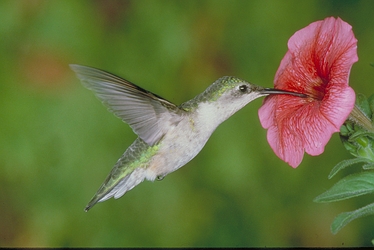When I first started quilting, I had a vague idea of what supplies I would need. I knew that scissors, needle and thread were the basic supplies. But now there are literally hundreds of items to choose from to make quiltin tastks easier, more accurate or more fun. Once you'ved picked your fabrics and you're ready to start a quilting project, it's a good idea to collect the tools and materials you'll need.
FABRIC:
The best fabric for quilting is 100% cotton. I learned that buying good quality fabric is very important in making sure that your quilt will last for a long time. When you are working on a project, but a little extra fabric just in case you make a cutting error. Also, once you start your project and you make a mistake, your fabric may not be available.
ROTARY CUTTERS
Rotary cutters have made quilting projects so much easier. Their round blades cut strips, squares, triangles, and diamonds more quickly, efficienty, and accurately than scissors can. Whenever I start a new project, I always change the blade. I want to make sure that the blade is very sharp so that I don't have any distortions when I cut my fabric.
CUTTING MATS
Cutting mats come in different sizes. I have one that covers my table so that I can cut easily my fabric. I have a smaller one that I can take to class and cut my fabric there. The cutting mat protects your work surface, it helps keep the fabric from shifting. The mats come in grids with hash marks at 1/8" increments, and 45-degree and 60-degree angles.
ACRYLIC RULERS
For making perfectly straight cuts with a rotary cutter, choose a ruler of thick, clear plastic. Many sizes are available; a good size to start with is a 6x24" rectangular ruler marked in 1/4" increments. There are many brand rulers. I have several at home in different sizes and uses. When I work on a project, I use the same brand ruler, for example, Omnigrid, in cutting my fabric. I have learned that if I use one brand for cuttng and another brand also, there will be discrepancies.
SCISSORS
Make sure that you have one scissors that are to be used only for fabric and one only for paper. Don't use your paper scissors for cutting fabric because in time, the edges will be dull. Get your scissors sharpened when they don't work effortlessly anymore. Any “catching”, rough spots or dullness that you can feel should be dealt with immediately.
MARKING TOOLS
There are many products available for marking sewing lines on fabric pieces or quilting designs on a quilt top. Marks made with special fabric markers are easier to remove after sewing and quilting. With any marking tool, work with a sharp point to get a fine, yet visible line.
TEMPLATE PLASTIC
A template is a pattern made from extra-sturdy material so you can trace around it many times without wearing away the edges. To make templates for hand- or machine-piecing, we recommend easy-to-cut template plastic. This slightly frosted plastic comes in sheets about 1/16" thick. What I use are the already acrylic plastic templates that come in different sizes and shapes. These are the basic ones that I have. As you will see, I have written the size it is and also put small sandpaper at each corner. This makes the template stay in place as you are cutting your fabric.
IRON AND IRON BOARD
Have a good iron . Pressing the seams will ensure an accurate block so there won't be any distortions. You can also find small ironing boards that you can take to class if it's not provided for you.
SEWING MACHINE
A good quality sewing machine that will stitch a straight line and well adjusted tension will work for piecing. Since I do a lot of sewing, I take my machine about every six months for a cleaning and tune up. THREAD
For machine piecing I use 100% cotton thread. If you use old thread, like I have, you will encounter problems. Using old thread can be brittle and lose elasticity. Hand quilting thread is stronger and thicker than sewing thread and should not be used in the sewing machine. For mchine quiltng, use 100% cotton machine quilting thread, cotton- wrapped polyester quilting thread, or fine nylon monofilament thread. There's a wide variety of colors that you can choose to fit your project and quilting design.
NEEDLES
The preferred sewing-machine needle for woven cotton fabrics is called a “sharp.” Sizes 75/11 and 80/12 are good choices for piecing, quilting, and binding most quilts. Use a smaller needle (70/10) if you’re piecing tightly woven batiks and a larger needle (90/14) for flannels. Dull needles can cause skipping or uneven stitches so it’s a good idea to insert a fresh needle at the start of every project.
For hand appliqué, most quilters like fine quilting needles. For hand quilting, use a “between” or quilting needle, which is a short needle with a small eye. Common sizes are 8, 9, and 10; size 8 is best for beginners.
SEWING FEET
The walking foot helps keeps long straight quilting lines smooth and pucker free. The quarter-inch foot serves as the seam guide. The one I have has a guide so that I have a true 1/4" seam. The free motion foot allows the fabric to move smoothly to make your designs.
PINS AND PIN CUSHIONS
 Pincushions are available in numerous styles, from the standard tomato shape so many of us are familiar with, to wrist, magnetic tabletop, and even decorative pincushions. Select a style that’s easy for you to use.
Pincushions are available in numerous styles, from the standard tomato shape so many of us are familiar with, to wrist, magnetic tabletop, and even decorative pincushions. Select a style that’s easy for you to use. So now that you have your basic supplies, start on your project and enjoy the results.


























